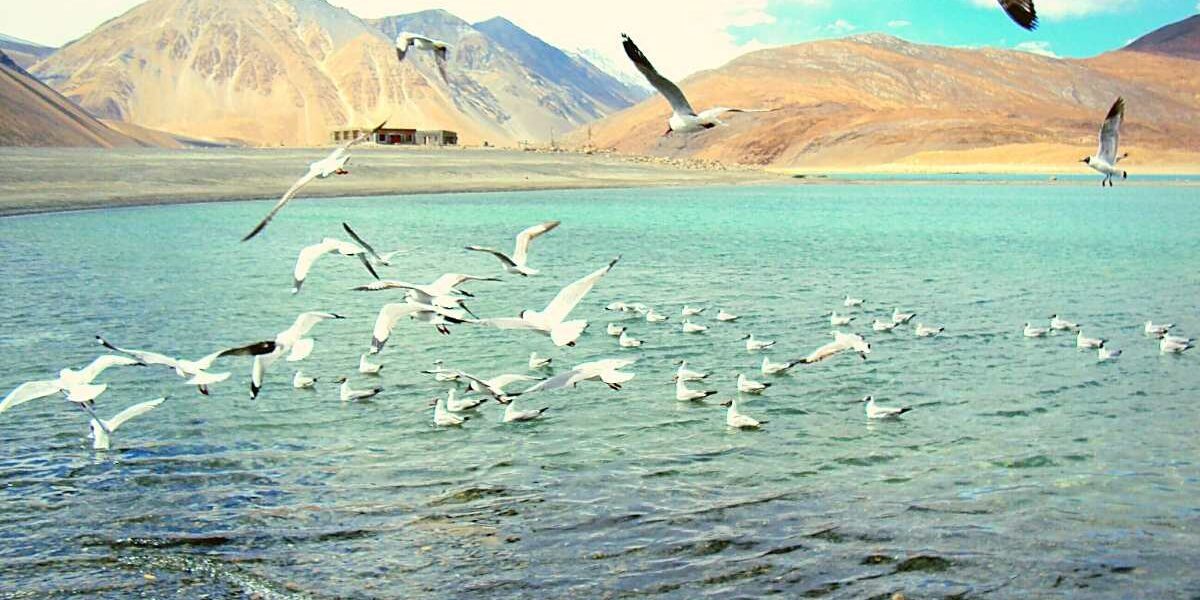Tucked away in the remote reaches of Ladakh, Tso Moriri is one of the most spectacular and serene high-altitude lakes in the Himalayas. For adventurers seeking an offbeat trekking experience, the Trek to Tso Moriri offers a journey through barren landscapes, snow-capped peaks, and rich cultural encounters. Located at an altitude of 4,595 meters, this lake, surrounded by the Changthang Plateau, is a gem waiting to be discovered by nature lovers, trekkers, and photographers alike.
Understanding Tso Moriri: Ladakh’s Hidden Gem
What is Tso Moriri Lake?
Tso Moriri—also known as Tsomoriri Lake—is a high-altitude lake in Ladakh, a region in the northernmost part of India. Situated on the Rupshu Valley of the Changthang Plateau, this glacial-fed lake is about 28 kilometers long and 8 kilometers wide, making it one of the largest high-altitude lakes in India.
Declared a Wetland Reserve, Tso Moriri is an important habitat for migratory birds, including the endangered black-necked cranes and bar-headed geese. Its serene, cobalt-blue waters reflect the towering peaks that surround it, creating an unforgettable sight for visitors.
“The serenity of Tso Moriri is unmatched. We camped by the lake and watched the sunrise paint the mountains gold. It was truly magical.”
– Maria Garcia, Spain, Travel Photographer
Location and How to Reach Tso Moriri
Tso Moriri lies around 240 kilometers southeast of Leh, the main town in Ladakh. Reaching this remote lake is no easy feat, but the journey is part of the adventure. There are two primary ways to reach Tso Moriri:
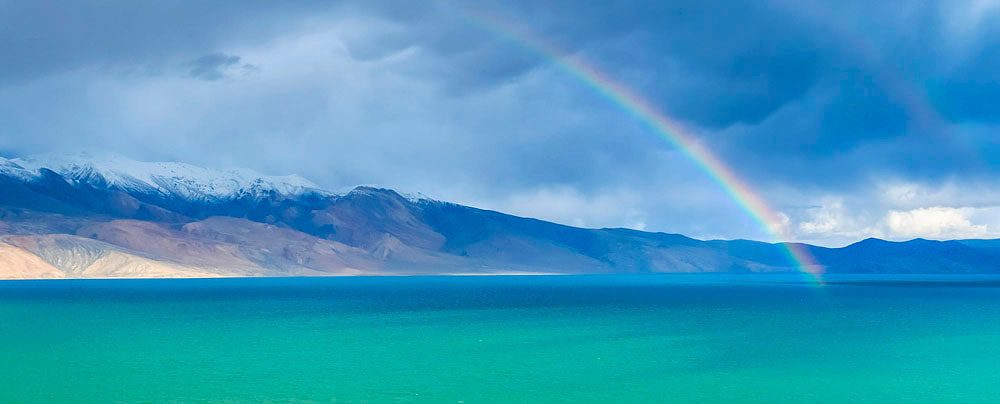
- By Road: Travelers can drive from Leh to Tso Moriri via Korzok village, the only settlement near the lake. The road is long and rugged, but the spectacular scenery makes up for it.
- Trekking Route: The more adventurous option is to embark on the Trek to Tso Moriri, a challenging journey that takes trekkers through breathtaking landscapes. The trek can take 7-9 days depending on the chosen route, starting from Rumtse or Chumathang.
Best Time to Visit Tso Moriri
The best time to trek to Tso Moriri is from June to September, when the weather is pleasant and the trekking trails are free from snow. In summer, temperatures are mild during the day, but nights can be cold due to the lake’s high altitude. Winter treks are also possible for seasoned trekkers, though temperatures can drop significantly.
“We visited in July, and the weather was perfect for trekking. The landscape was green, the skies clear, and Tso Moriri looked like a painting!”
– John Smith, UK, Adventure Guide
Preparing for the Trek: Essential Information for Travelers
Trekking Permits and Regulations for Tso Moriri
Trekking in Ladakh requires Inner Line Permits, especially for foreign travelers, as Tso Moriri is close to the Tibetan border. Permits are issued in Leh, and travelers need to apply in person with valid ID. Additionally, restricted area permits are required to enter Changthang and other sensitive regions around Tso Moriri.
Permits cost around ₹400–₹600 (approximately $5–$8 USD), and it’s essential to check current regulations, as rules change frequently.
Acclimatization Tips and Coping with High Altitude
Since Tso Moriri sits at nearly 4,600 meters, proper acclimatization is crucial to avoid Acute Mountain Sickness (AMS). Travelers are advised to spend a few days in Leh (3,500 meters) before starting the trek to allow their bodies to adjust to the altitude.
Acclimatization Tips:
- Stay hydrated and avoid alcohol or heavy meals.
- Ascend slowly, giving your body time to adapt to lower oxygen levels.
- Be aware of AMS symptoms like headaches, dizziness, and nausea, and descend immediately if they worsen.
“I was worried about altitude sickness, but spending three days in Leh before the trek helped a lot. Slow and steady is the key!”
– Dinesh Patel, India, IT Consultant
What to Pack for the Tso Moriri Trek
Packing the right gear is essential for surviving the high-altitude trek. Here’s a checklist for trekkers:
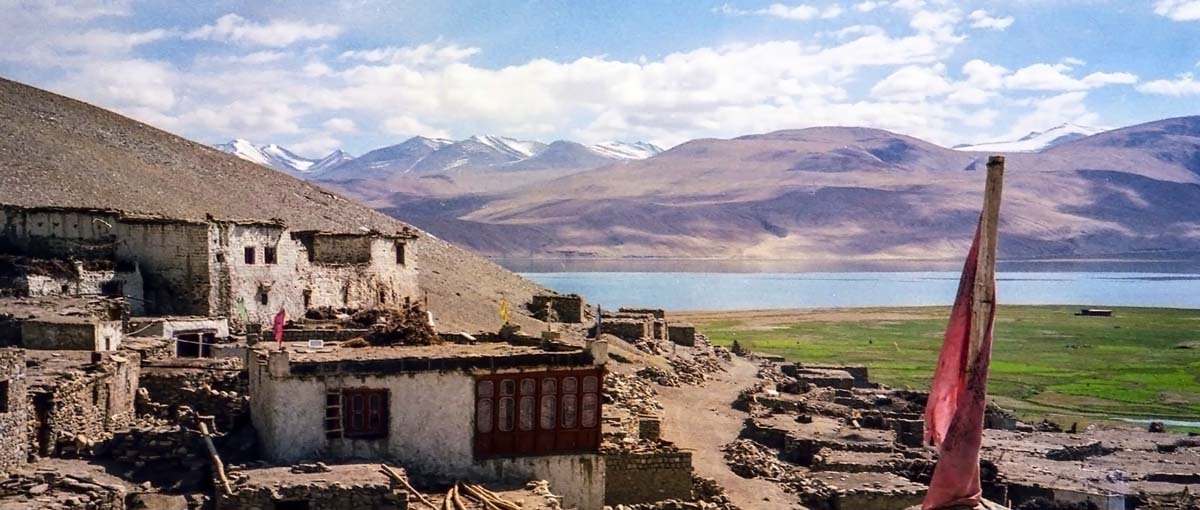
- Warm layers: Temperatures can drop sharply, so bring a down jacket, thermals, and a windproof outer layer.
- Trekking boots: Sturdy, waterproof boots with good ankle support are a must.
- Sleeping bag: Rated for -10°C or lower, as nights can be freezing.
- Trekking poles: Useful for navigating the uneven terrain.
- Hydration system: Dehydration is a concern at high altitudes, so carry a hydration pack or bottles.
- Sunscreen and sunglasses: UV rays are stronger at higher altitudes.
The Journey: Trekking to Tso Moriri
Overview of the Trekking Route
The Tso Moriri trek starts from Rumtse and covers around 110 kilometers over 8–9 days. The trail passes through high mountain passes like Kyamar La and Korzok La, offering sweeping views of the Himalayan ranges. The trek is considered moderate to challenging due to the altitude and rough terrain.
Trekkers will encounter scenic spots like the Rupshu Valley, known for its vast expanses and nomadic Changpa tribes, and campsites near Korzok village, where the famous Korzok Monastery stands.
Trek Difficulty and Fitness Level Required
The Tso Moriri trek is classified as a moderate to difficult trek, primarily due to the high altitude. Trekkers should be physically fit and mentally prepared for long days of walking in rugged terrain. It’s recommended to have prior high-altitude trekking experience, though beginners with good fitness levels can complete the trek with the help of experienced guides.
“The trek was tough but absolutely worth it. We climbed over 5,000-meter passes, and the views were like nothing I’ve ever seen!”
– Kevin Lee, USA, Fitness Coach
Camping Along the Trek
Camping is an integral part of the Tso Moriri trekking experience. Trekkers camp in scenic valleys, next to rivers, and finally near the shores of Tso Moriri. Korzok village, located on the northern shores of the lake, offers basic homestays and tented accommodations for those who want a more comfortable stay.
Nature and Wildlife Around Tso Moriri
Wildlife and Birdwatching Opportunities
Tso Moriri Wetland Reserve is a sanctuary for migratory birds and rare wildlife. Birdwatchers can spot species like the black-necked crane, bar-headed goose, and Ruddy Shelduck. The region is also home to snow leopards, Tibetan wolves, and Himalayan marmots.
The Unique Flora and Fauna of Ladakh
The Changthang Plateau is a cold desert with sparse vegetation, but the trek offers opportunities to observe alpine flora like edelweiss, wildflowers, and patches of grasses that feed the Changpa nomads’ livestock.
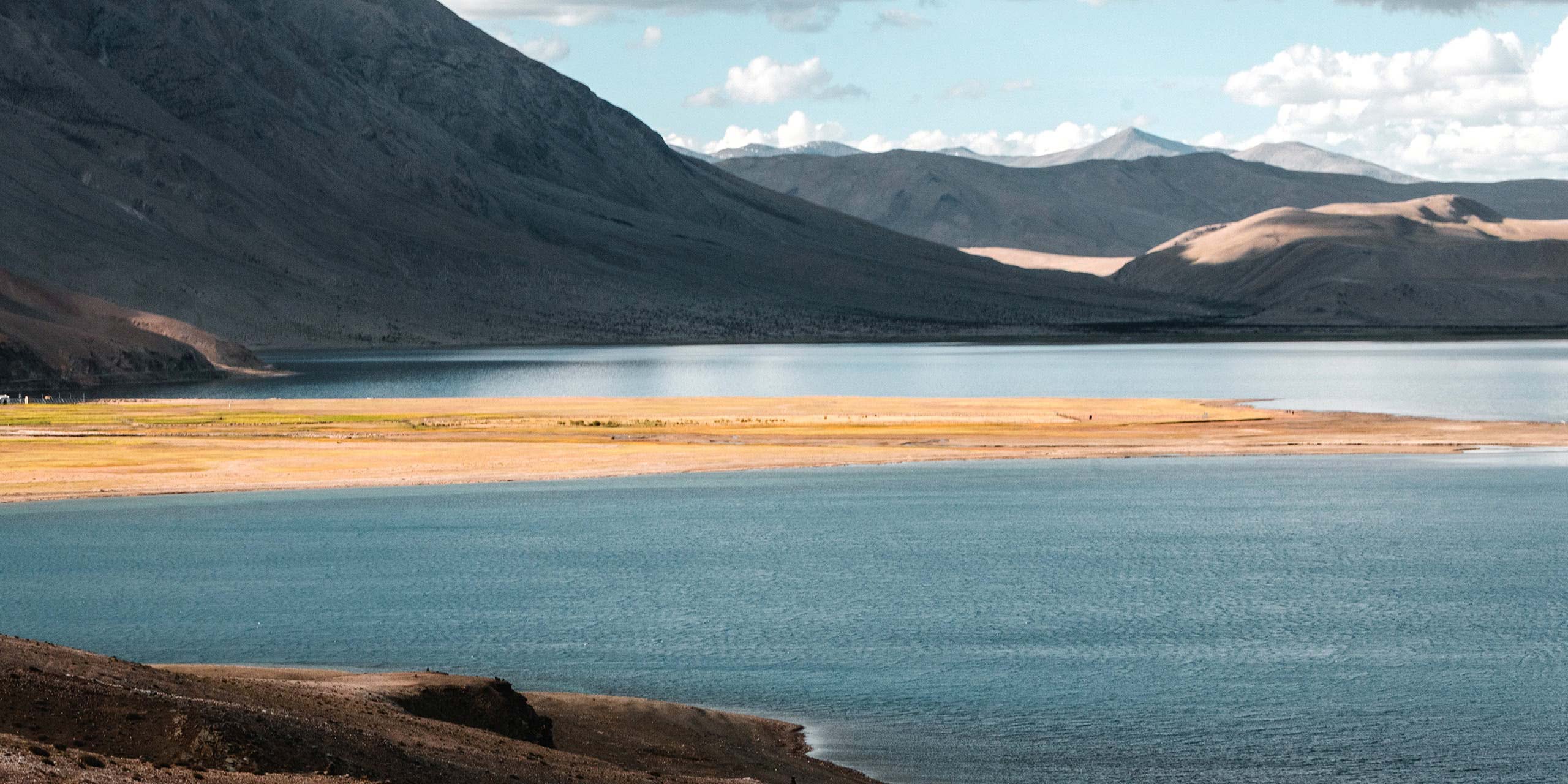
Cultural Encounters: The People of Tso Moriri
The Changpa Nomads: Guardians of the Land
The Changpa nomads, who are known for their yak herding and pashmina wool production, inhabit the region around Tso Moriri. Trekkers can witness their traditional way of life, which has remained largely unchanged for centuries. Their ability to survive in such harsh environments is a testament to their resilience.
“Meeting the Changpa nomads was the highlight of my trip. Their hospitality and deep connection with the land left a lasting impression on me.”
– Andrea Rossi, Italy, Anthropologist
Exploring Korzok Monastery and Village
Korzok Monastery, one of the highest-altitude monasteries in the world, is a spiritual highlight of the trek. The village of Korzok offers a glimpse into Tibetan Buddhism and Ladakhi culture, with its ancient stupas and traditional Ladakhi homes.
Practical Tips for Trekking Tso Moriri
Trekking Safety Tips and Challenges
Due to the high-altitude terrain and unpredictable weather conditions, trekkers must be well-prepared. Carry a first aid kit, emergency shelter, and sufficient food and water. Hiring a local guide is also recommended for navigating the remote trails.
Responsible and Sustainable Trekking
When trekking to Tso Moriri, it’s essential to follow eco-friendly practices. Avoid littering, respect the wildlife, and ensure that you leave no trace behind. The fragile environment around the lake must be preserved for future generations.
“We made sure to carry all our waste out of the reserve. It’s important to respect the pristine beauty of places like Tso Moriri.”
– Michael Berger, Germany, Environmental Engineer
Photography and Stargazing at Tso Moriri
Tso Moriri is a dream destination for photographers. The reflection of the mountains on the lake at sunrise and sunset offers stunning photo opportunities. The clear night skies, free from light pollution, make it perfect for stargazing and astrophotography.
Conclusion: Why Trekking to Tso Moriri Should Be on Your Bucket List
From its serene beauty to the rugged trekking trails, the Trek to Tso Moriri offers a truly unique experience. Whether you’re an avid trekker, a nature lover, or someone seeking solitude in the high mountains, Tso Moriri promises an unforgettable journey.
Pack your bags, prepare for the altitude, and embark on this once-in-a-lifetime adventure to one of Ladakh’s most pristine locations.
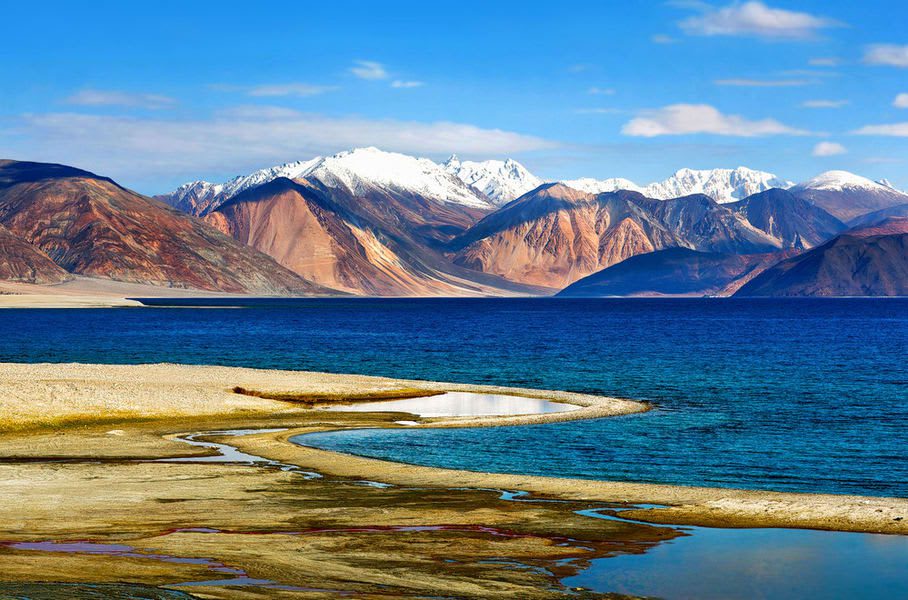
FAQs: Trekking to Tso Moriri
1. How difficult is the Tso Moriri trek?
The trek is moderately difficult due to its high altitude and rugged terrain. Prior trekking experience is beneficial, but fit beginners can also complete the trek with proper acclimatization.
2. What permits do I need to trek to Tso Moriri?
You will need an Inner Line Permit and possibly a restricted area permit, which can be obtained in Leh.
3. When is the best time to trek to Tso Moriri?
The best time for trekking is from June to September when the weather is ideal for outdoor activities.
4. What wildlife can I expect to see around Tso Moriri?
The Tso Moriri Wetland Reserve is home to migratory birds like black-necked cranes and wildlife like snow leopards and Tibetan wolves.
5. Can I camp near Tso Moriri?
Yes, camping is available along the trekking route and near Korzok village, where you can also stay in homestays.
6. How can I prevent altitude sickness during the trek?
Acclimatize in Leh for a few days before starting the trek, stay hydrated, and ascend slowly to prevent AMS.

